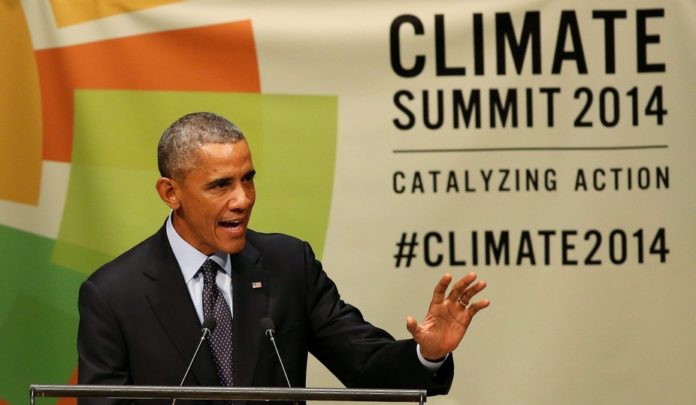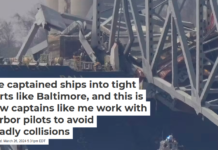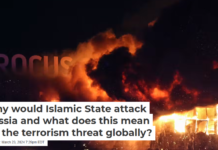
By Don Henry, University of Melbourne
The 2014 UN Climate Summit has wrapped up in New York. What has progressed and what big challenges remain in the run up to and beyond the Paris negotiations in December 2015?
Secretary General of the UN, Ban Ki-moon, convened this meeting of “Heads of State” over a year before the Paris negotiations, which aim to produce an agreement to reduce greenhouse gas emissions.
The New York summit intended to build momentum for an ambitious binding agreement and to encourage action now. This meeting is additional to the usual climate negotiation cycle, and reflects on some “lessons learned” from the Copenhagen Climate Summit in 2009 where too much was left too late for success.
I attended the summit meetings from the University of Melbourne. Momentum is building. Some significant actions were announced.
The US and China, the world’s biggest emitters of carbon pollution, both called for an ambitious binding agreement from Paris, consistent with their calls to action at last June’s Bonn UN Framework Convention on Climate Change negotiations.
Importantly they signalled further ambition. China has committed to cut its carbon intensity by 40 to 45% by 2020 over 2005 levels and signalled they may consider peaking and then reducing their emissions as soon as possible.
President Obama said the US will take a leadership role in the negotiations. He noted the US recognises its role in creating this problem and their responsibility to solve it.
Pledges made
The Secretary General launched an initiative to mobilise US$200 billion of private and public funds by the end of 2015 to stimulate green growth and support efforts to address climate damage, particularly in poorer countries. This is important to build the confidence of poorer nations who are and will be hard hit by increasingly extreme weather.
Significant announcements were also made to scale up renewable energy projects, energy efficiency efforts, 28 governments agreed for an end to forest loss by 2030, 2,000 mayors signed a compact to strengthen city emission reduction targets and actions, and to promote Climate-Smart Agriculture to 500 million farmers. Some or all of these elements could be picked in ambitious agreements of those willing to act and linked to a binding consensus Paris agreement.
Germany will go carbon neutral by 2050 flagging an important opportunity for a mid century decarbonisation target in a Paris agreement.
David Cameron, Prime Minister of the still United Kingdom said the UK “is on track to cut emissions by 80% by 2050”.
President of the World Bank, Jim Yong Kim, noted that 73 governments representing 52% of global GDP support a global price on carbon. Emissions trading schemes are gaining momentum and Australia will need to revisit this needed policy initiative as soon as possible.
Australia’s absence noted
Underlining the importance and urgency of leadership, President Obama said “climate change will define the coming century more than any other issue”. He said “we are the first generation to feel the impacts of climate change and the last generation that can do anything about it”.
Which leaders were present, and which weren’t highlights the strengths and weaknesses of current leadership. President Obama and about another 120 “Heads of State” were present. About 35 were not. These included India, China, and Australia.
India and China are cautious. They are calling for more ambition to reduce emissions from developed countries, including pre 2020 through ratification of the 2nd Commitment Period of the Kyoto Protocol and stronger post 2020 targets and funding.
While it was good that Australian’s foreign minister Julie Bishop was present and spoke, the absence of prime minister Tony Abbott was notable. Government delegations and international bodies asked me repeatedly why a wealthy country like Australia is sending signals that it is placing a lower priority on needed international action at this crucial time.
Landmark reports
In the week leading unto the summit two large bodies of economic analyses were released. One, the “Pathways to Deep De-carbonizaton” project spearheaded by Jeffrey Sachs of Columbia University, looked at economic pathways to achieve carbon neutral countries by 2050.
The other, steered by Lord Stern of the London School of Economics, looked at pathways leading to a new climate economy before 2020.
They both tell the same important new story. Ambitious climate action is achievable and can stimulate growth and jobs with appropriate policies and investment. In fact development that generates high levels of carbon pollution is increasingly holding back current and future prosperity.
Climate action on the streets
Finally, a huge march in New York city on Sunday — with nearly 400,000 attendees — symbolised rapidly growing public hunger for action around the world. The marchers came from all walks of life including leaders of governments and even the Secretary General himself!
Lots of pitfalls remain between now and Paris. Currently country commitments to cut emissions fall short of the action needed to achieve the agreed goal of keeping warming below an average of 2 degrees C. There is not enough support on the table yet to enable a rapid and fair transition to clean economies.
And as seen at this summit, most countries are holding their negotiating cards close to their chest prior to March 2015, when they will make submissions for post-2020 commitments to reduce emissions.
The international analyses on climate science, social and environmental impact, and economic opportunity are largely compelling. At the end of the day, the positions of key countries including China, the US, India, Europe, Brazil, South Africa and others including maybe Australia will make or break Paris.
Are the analyses, communications, public, and political engagements strong enough in and with these nations to enable them to support a safer, sustainable, prosperous and fairer future from the clear and present great danger we have created? Only time will tell.
Further reading: Mapping global carbon emissions
![]()
Don Henry receives funding from the Australian Conservation Foundation. He is a former CEO of the Foundation.
This article was originally published on The Conversation.
Read the original article.




















